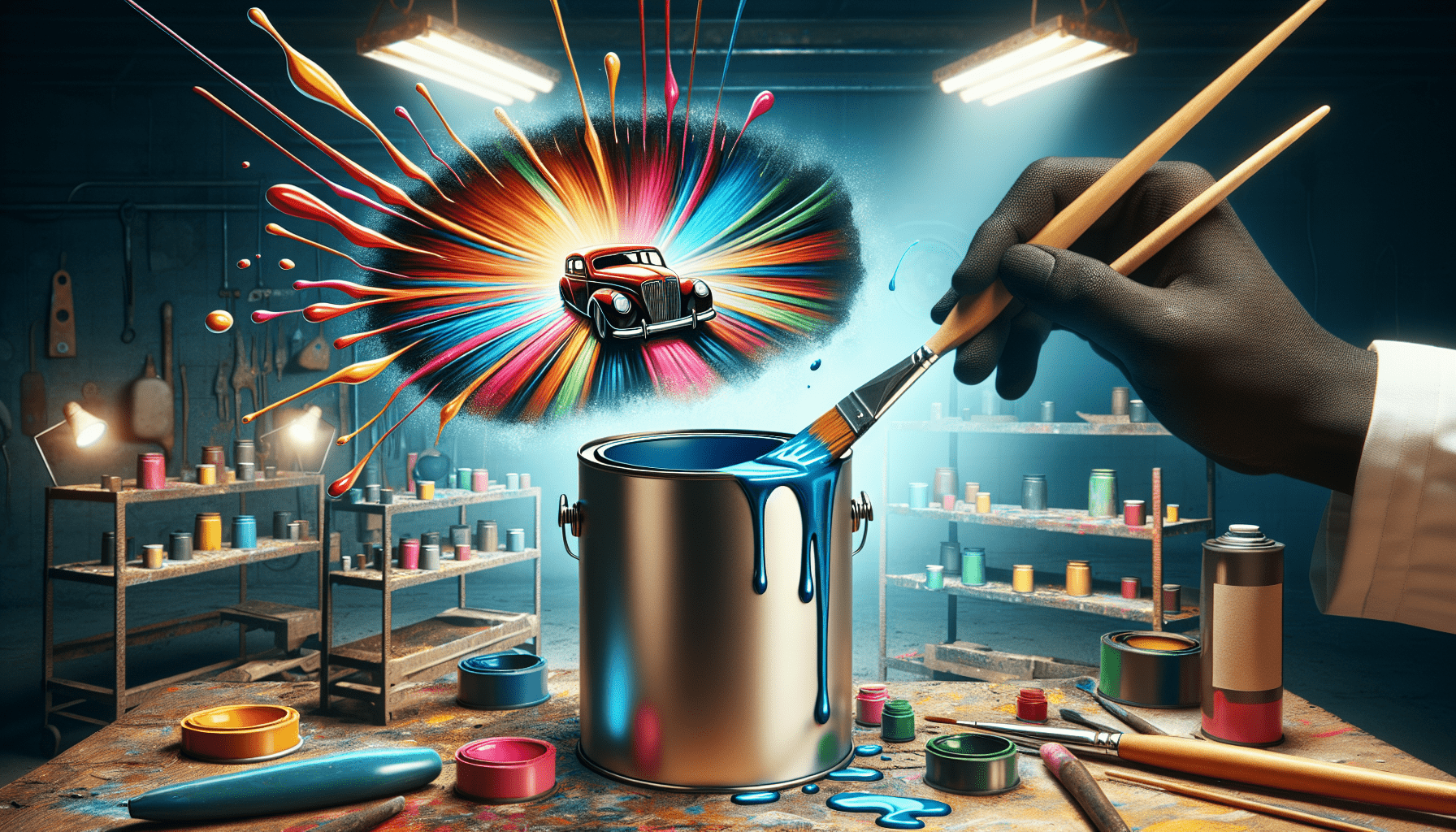Revell Enamel Paint offers a multitude of possibilities for enhancing the appearance of your models and crafts, with its high-quality, durable finish. This article provides a concise guide on effectively utilizing Revell Enamel Paint. It covers the essential steps involved in preparing the surface, applying the paint, and achieving a flawless finish. Whether you are a seasoned modeler or new to the world of painting, this informative piece will equip you with valuable insights and techniques to make the most out of your Revell Enamel Paint.
Choosing the Right Surface
Before starting any painting project, it is crucial to choose the right surface to ensure a smooth and long-lasting finish. Look for surfaces that are clean, dry, and free from any dirt or debris. Ensure that the surface is smooth and free from any imperfections. It is also essential to consider the material of the surface, as different materials may require different preparation and priming techniques. Whether you are painting on wood, metal, plastic, or any other material, ensure that it is suitable for enamel paint.
Clean the Surface
The first step in preparing the surface is to thoroughly clean it. Use a mild detergent or cleaner to remove any dirt, grease, or oil from the surface. Scrub gently with a soft brush or sponge to ensure that all the contaminants are removed. Rinse the surface with clean water and allow it to dry completely before proceeding to the next step. Cleaning the surface is essential as it helps the paint adhere better and ensures a smooth and even finish.
Prepare the Surface
Once the surface is clean and dry, it is important to prepare it for painting. If there are any imperfections such as scratches, dents, or rough patches, sand them down using fine-grit sandpaper. This will create a smooth surface for the paint to adhere to. After sanding, wipe away any dust with a clean cloth. If the surface is porous or has a rough texture, consider applying a primer to help the paint adhere better and provide a more even finish.

Prime the Surface
Applying a primer is an essential step in achieving a professional-looking paint job. Primers create a smooth, uniform surface that helps the paint adhere better and provides a more even color. Choose a primer that is specifically designed for the type of surface you are painting. Apply the primer using a brush or roller, following the manufacturer’s instructions. Allow the primer to dry completely before applying the paint.
Preparing the Paint
Before starting to paint, it is important to prepare the paint properly to ensure optimum results. Begin by shaking the paint well to mix the pigments thoroughly. This will help achieve a consistent and even color. If the paint seems too thick, it may need to be thinned. Refer to the paint manufacturer’s instructions for the recommended thinner and proportions. Mix the paint and thinner well until you achieve a smooth and flowing consistency. Using the right tools and materials, such as quality brushes or airbrushes, is also crucial to achieving a professional-looking finish.
Applying the Paint
When it comes to applying the paint, there are several techniques you can use, depending on the desired result. One common method is using a brush or airbrush to apply the paint. Ensure that the brush or airbrush is clean and free from any previous colors. Start by applying a base coat, which will help create a solid foundation for the subsequent layers of paint. Apply the paint in thin layers, using smooth and even strokes. Avoid applying too much paint at once, as this can result in brush marks or an uneven finish. Allow each layer to dry completely before applying another layer to avoid smudging or blending the colors.

Cleaning Up
Properly cleaning your brushes and tools immediately after use is essential to maintain their longevity and ensure a quality paint job. Enamel paint can dry quickly, so it is important to clean your brushes and tools as soon as you finish painting. Use appropriate solvents, such as mineral spirits or paint thinner, to clean brushes and tools. Follow the manufacturer’s instructions and ensure that you dispose of any waste materials properly, following local regulations.
Achieving Different Effects
To add depth and visual interest to your painted surfaces, you can experiment with different techniques to achieve various effects. Dry brushing is a technique where you remove most of the paint from your brush and lightly skim it over the surface, leaving small amounts of paint to highlight raised areas or textures. Washes involve applying a highly thinned paint over a base color to create shading or a worn-out appearance. Masking techniques can be used to create crisp lines or protect certain areas from paint. Weathering and aging techniques can be used to simulate wear and tear or create a vintage look on your painted surface.
Avoiding Common Mistakes
To ensure a successful paint job, it is important to avoid common mistakes that can affect the overall finish. Using too much paint can result in drips, brush marks, and an uneven finish. It is essential to apply thin layers of paint and build up the color gradually. Not allowing proper drying time between layers can also lead to smudging or blending of colors. Be patient and wait for each layer to dry completely before moving on to the next. Using a primer is crucial, as it helps the paint adhere better and provides a smoother finish. Always clean the surface properly before painting, as any dirt or grease can prevent the paint from adhering properly.
Safety Precautions
Painting with enamel paint involves handling potentially hazardous substances, so it is important to take proper safety precautions. Work in a well-ventilated area to minimize the inhalation of fumes. It is also important to wear protective gloves and goggles to protect your skin and eyes from any contact with the paint or solvents. Keep the work area away from open flames or sparks, as enamel paint is highly flammable. Follow all safety guidelines and instructions provided by the paint manufacturer.
Tips and Tricks
Painting with enamel paint can be a rewarding and enjoyable experience. To improve your skills, consider practicing on a test surface first to familiarize yourself with the paint and different techniques. Experiment with different techniques, such as dry brushing and washes, to achieve different effects and textures. Don’t be afraid to blend colors to create a custom look. The more you practice and experiment, the better you will become at achieving the desired results.
Storing and Preserving Paint
To ensure the longevity of your unused paint, it is important to store it properly. Seal the paint containers tightly to prevent air from entering and drying out the paint. Store the paint in a cool, dry place away from direct sunlight and extreme temperatures, as these can affect the quality and consistency of the paint. Avoid storing the paint near any heat sources or flammable materials. Additionally, be cautious not to contaminate the paint by using dirty brushes or tools. Always clean your brushes and tools thoroughly before dipping them into the paint to prevent any unwanted particles or debris from contaminating the paint.
Common Questions and Troubleshooting
Painting projects can sometimes present challenges or unexpected issues. If you find that the paint is not sticking to the surface, ensure that the surface is clean and properly prepared. Contaminants such as dirt, grease, or oil can prevent the paint from adhering properly. Sanding the surface and applying a primer can help improve adhesion. If you notice brush strokes in your finish, try using a high-quality brush or switching to an airbrush for a smoother application. Finally, if you need to remove dried paint from a surface, there are several techniques you can try. Sanding, scraping, or using paint removers specifically designed for the type of paint can help remove dried paint effectively.
In conclusion, using Revell enamel paint requires careful preparation, proper application techniques, and adherence to safety precautions. By choosing the right surface, preparing it properly, and using the right tools, you can achieve a professional-looking paint job. Experimenting with different techniques and effects allows you to personalize your painted surfaces and create unique finishes. Avoiding common mistakes and following safety guidelines will ensure a successful painting experience. With practice and patience, you can master the art of using Revell enamel paint and produce stunning results on a variety of surfaces.



